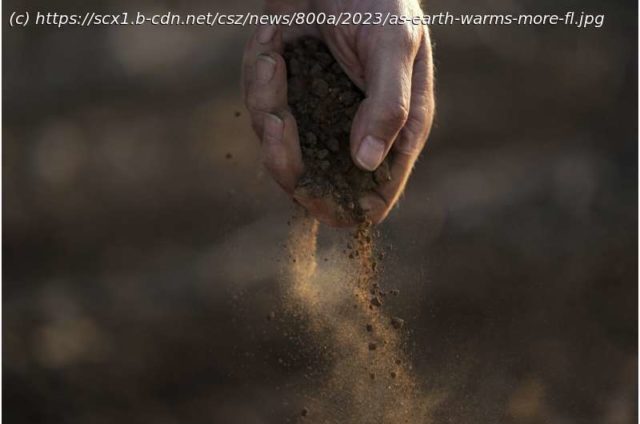Climate change is making droughts faster and more furious, especially a specific fast-developing heat-driven kind that catch farmers by surprise, a new study found.
Climate change is making droughts faster and more furious, especially a specific fast-developing heat-driven kind that catch farmers by surprise, a new study found.
The study in Thursday’s journal Science found droughts in general are being triggered faster. But it also showed that a special and particularly nasty sudden kind—called «flash droughts» by experts—is casting an ever bigger crop-killing footprint.
It comes only in the growing season—mostly summer, but also spring and fall—and is insidious because it’s caused not just by the lack of rain or snow that’s behind a typical slow-onset drought, hydrologists and meteorologists said.
What happens is the air gets so hot and so dry that it sucks water right out of plants and soil.
«It’s the increasing thirstiness of the atmosphere,» said UCLA and National Center for Atmospheric Research climate scientist Daniel Swain, who wasn’t part of the study. Swain called the issue «very relevant in a warming climate.»
The term flash drought was coined around 2000 but it really took off in 2012, when a $30 billion sudden drought struck the central United States, one of the worst droughts since the infamous Dust Bowl devastated the Plains in the 1930s, according to the study.
«Because it occurs very, very fast people started to focus on this new phenomenon,» said study lead author Xing Yuan, dean of the School of Hydrology and Water Resources at Nanjing University of Information Science and Technology in China.






